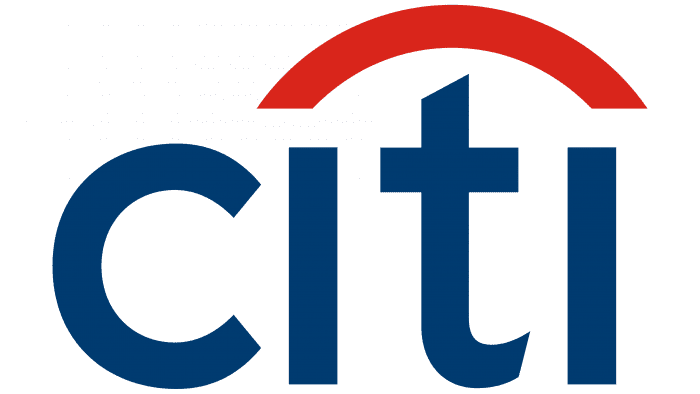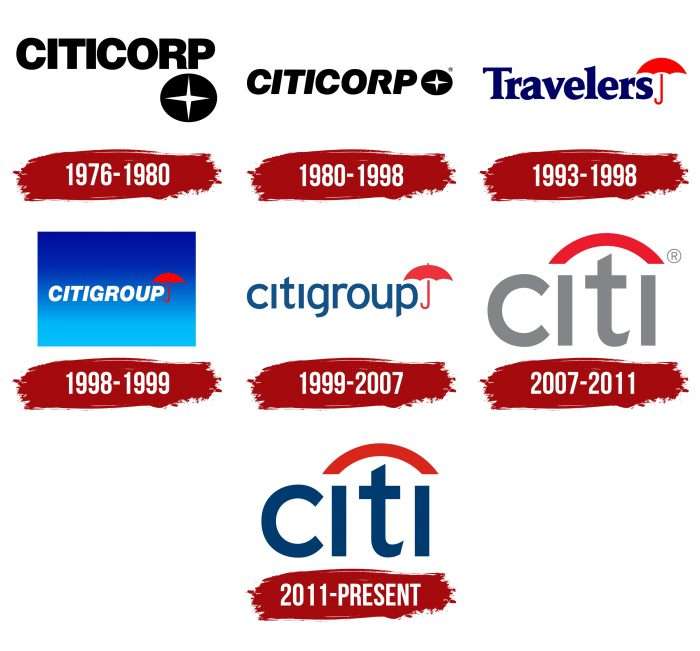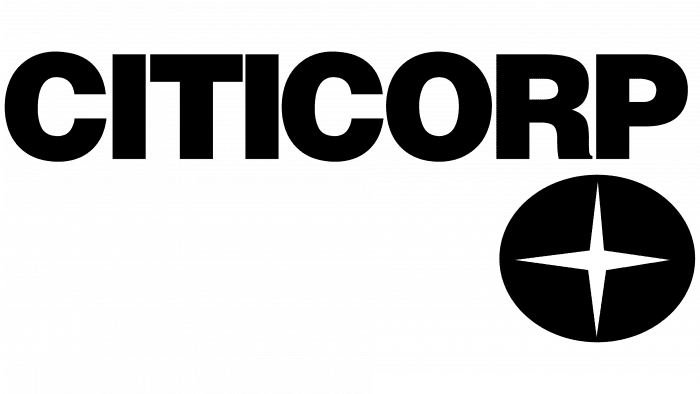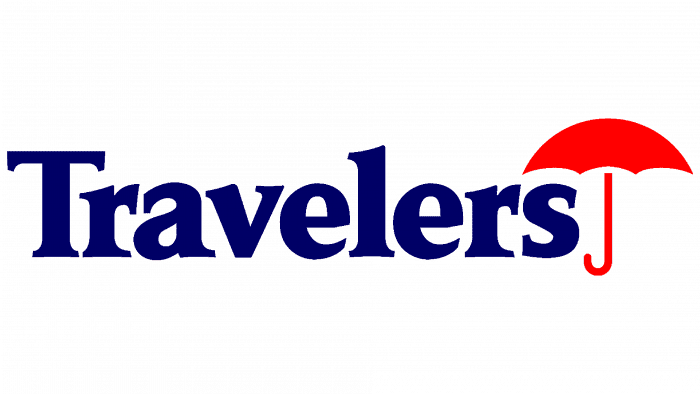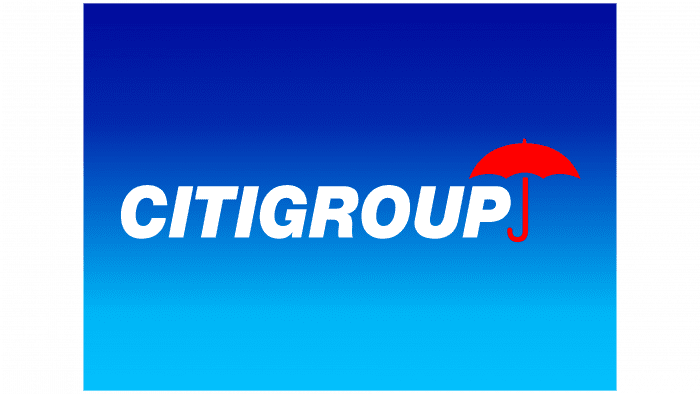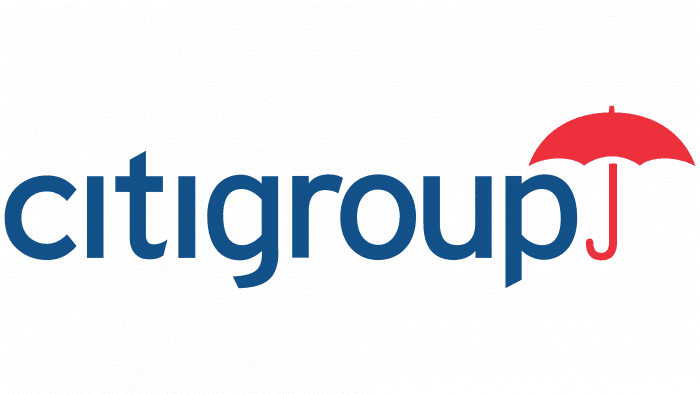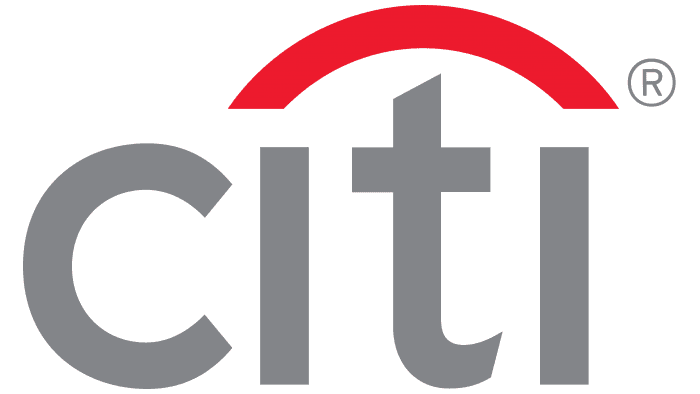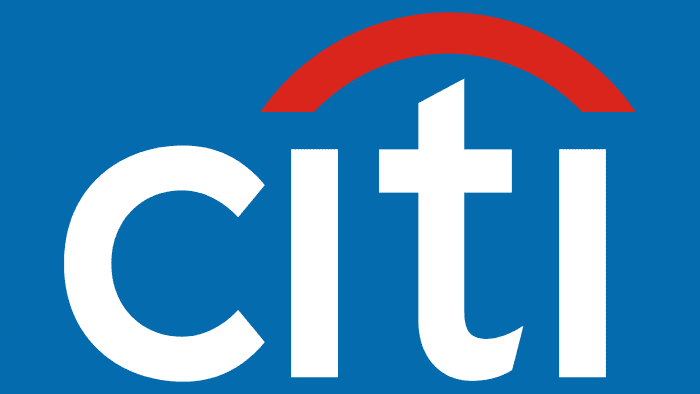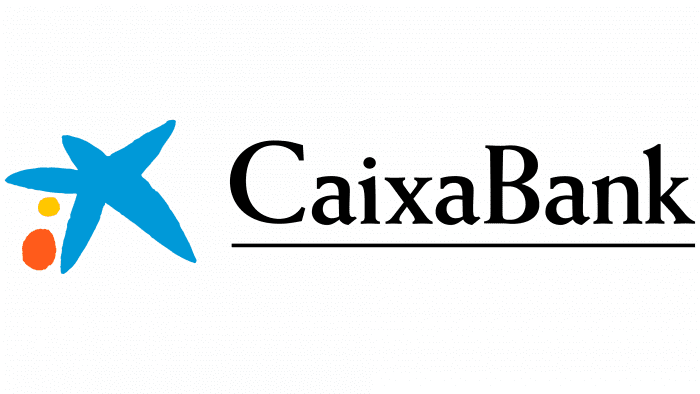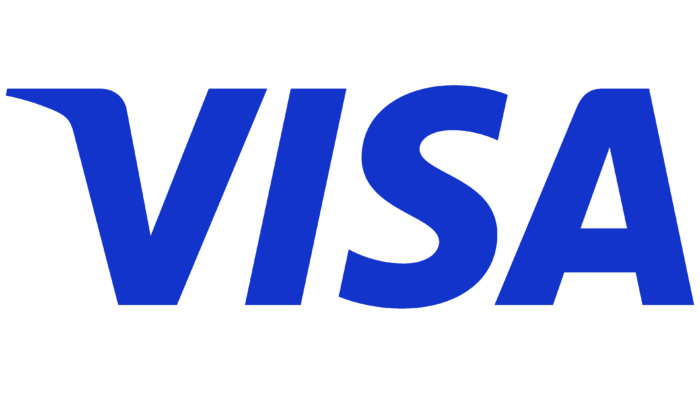Protection from all adversity is the main theme of the Citigroup logo. The emblem evokes a feeling of comfort and home. The bank treats customers like family members. Thanks to the organization’s impressive cash dome, there is nothing to worry about.
Citigroup: Brand overview
| Founded: | October 8, 1998 |
| Founder: | Sanford Weill, Samuel Osgood |
| Headquarters: | New York, NY, U.S. |
| Website: | citigroup.com |
Meaning and History
This banking structure has an even more ancient origin, dating back to 1791. It was then that the First Bank of the United States was opened, which went bankrupt a few years later. In 1812, its New York branch became independent and was reorganized into the City Bank of New York.
In 1865, he was granted a national bank license and a work permit on behalf of the Treasury. Unlike many other financial services, the new player combined large investment projects with retail deposits and operations, so he was a winner. Gradually he moved on to takeovers of competitors.
Later, in the 20th century, the bank became a powerful financial instrument at the international level. It received its name, reflected in the emblem, from the “progenitors” – CITIcorp and Travelers GROUP. Overall, there are about seven logos in his career.
What is Citigroup?
Citigroup is the largest banking institution headquartered in New York City. It has more than 200 million customers in more than 160 countries worldwide. It’s now the third-largest bank in the U.S. It’s a multinational investment and financial services bank representing the Big Four. It was formed in 1998 by the merger of Citicorp and Travelers Group, but the latter separated in 2002.
1976 – 1980
Citicorp had a monochrome logo with simple elements. It showed the bank’s full name and a round icon with a white four-pointed star, which was located at the bottom right. The letters were very close to each other and visually almost merged. The font was straightforward, from the Sans Serif category.
1980 – 1998
After the redesign, the spelling of the word “Citicorp” changed: it became slanted. The font received elegance and refinement, and the black sign with a star was rearranged in one row with the name – at the end of the word.
1993 – 1998
The Travelers Bank logo was colorful and original because it featured a red umbrella. He personified the protection of clients from any trouble. The umbrella was at the end of the title, which was written in a serif typeface.
1998 – 1999
During this period, the fateful merger of Citicorp with Travelers Inc. The result was a financial and banking organization called Citigroup with a combined logo. The background was a gradient blue; the name was white, the umbrella was red. Moreover, he was still at the end of the inscription, covering the last letter “P.”
1999 – 2007
The developers have changed the font in the logo, making it thinner and lighter. Although the letters do not have serifs, in some places, they are replaced by oblique cuts – for example, “t” and “p.” The letters are blue, and the umbrella is bright red as before.
2007 – 2011
Earlier, designer Paula Scher from the Pentagram agency proposed her vision of the corporate logo, approved by the bank’s board. It was “Citi” with an inverted parenthesis above it. In essence, the arch denoted an umbrella, which was simplified to an upward curved stroke. Paula created her logo in ten minutes on a napkin, for which she received a half-million dollars. During the period indicated, the text was gray, and the bar was red.
2011 – today
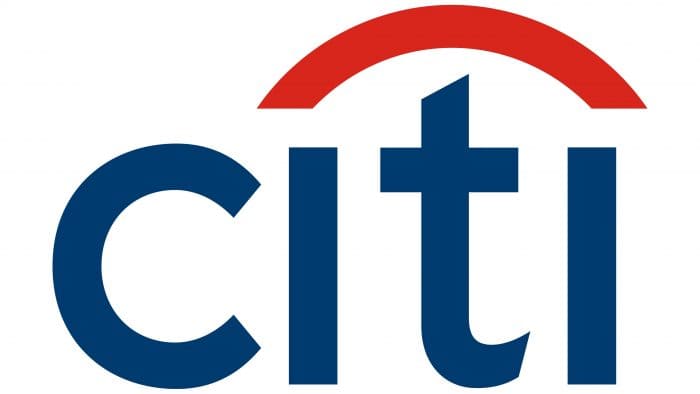
The developers returned the inscriptions to their original blue color without touching any other details. Today, the Citigroup branding looks the same as it did in 1999 when it debuted.
Citigroup: Interesting Facts
Citigroup, a major player in global finance, has shaped the banking world significantly since its start in 1812 as the City Bank of New York.
- Early Beginnings: Since 1812, Citigroup has grown through mergers and acquisitions, becoming a top global bank.
- Becoming Citigroup: The 1998 merger with Travelers Group, marking one of the largest mergers of its time, transformed it into Citigroup, highlighting its global financial ambitions.
- ATM Introduction: Citibank, part of Citigroup, was among the first to introduce ATMs in the 1970s, changing how we access money and banks.
- Worldwide Operations: Citigroup operates in over 160 countries, serving millions of customers, from individuals to governments and institutions, showing its extensive global reach.
- 2007-2008 Financial Crisis: Citigroup was deeply affected by the financial crisis and received government bailout funds to stabilize the bank and the broader financial system.
- Restructuring After the Crisis: Post-crisis, Citigroup streamlined its operations, focusing on its core banking business to become more efficient.
- Sustainability Efforts: The bank has committed billions to sustainable finance to support environmental and climate solutions worldwide.
- Digital Banking Innovations: Citigroup invests in digital banking to improve customer service and security and introduce new products while keeping up with technological advancements.
- Diversity and Inclusion: Citigroup is recognized for promoting diversity and inclusion within its workforce. It supports various programs for women, minorities, and the LGBTQ+ community.
- Influencing Regulatory Changes: The creation of Citigroup influenced the repeal of the Glass-Steagall Act, which previously separated commercial and investment banking, paving the way for financial conglomerates to offer a full range of services.
Citigroup’s history underscores its finance leadership, showcasing its role in banking innovations, commitment to sustainability, and adaptability to the ever-evolving global financial landscape.
Font and Colors
The bank’s identity has undergone a major modification, based on the combination of two financial institutions and their logos. The result is clear visual identification: a printed text of the first four letters of the name “Citi” with an arch connecting the two “i” s and closing the “t.” That is, the authors have retained the elements of the two previous structures and added modern features.
After forming the new bank, the designers chose the commercial typeface Interstate Regular, designed by Tobias Frere-Jones, for its logo. It is a well-read sans serif with a medium intersymbol space and angled “t” and “p” legs. Its free counterpart is the Blue Highway-Regular font.
The logo’s palette consists of vibrant colors: Maximum red (# DB230B) and Ateneo blue (# 003A72). Visually, they are perfectly combined and stand out strikingly against each other.
FAQ
What is the entity name of Citigroup?
The entity name is CITIGROUP INC. This is the legal name under which the company is registered and operates.
Citigroup Inc. is a major global financial services corporation offering various products and services, including consumer banking, corporate banking, investment banking, and wealth management.
The brand operates in many countries, making it one of the largest financial institutions in the world. With headquarters in New York City, Citigroup Inc. serves millions of customers, from individual consumers to large corporations and governments. The company provides innovative financial solutions and maintains a strong global presence.
Is Citigroup the same as Citibank?
Citigroup and Citibank are related but not the same entity. Citibank, N.A. (where “N.A.” stands for “National Association”) is the main U.S. banking subsidiary of Citigroup, a global financial services company.
Citibank was founded in 1812 as the City Bank of New York and later became the First National City Bank of New York. Citigroup’s consumer banking division offers checking and savings accounts, loans, credit cards, and mortgages.
Citigroup is the parent company that provides various financial services worldwide. These include consumer banking through Citibank and corporate banking, investment banking, wealth management, and more.
Is Citigroup a US company?
Yes, Citigroup Inc. is a U.S. company. It is an American multinational financial services corporation based in New York City. It is one of the largest financial institutions in the world, offering services such as consumer banking, corporate banking, investment banking, and wealth management.
The company was formed from the merger of Citicorp and Travelers Group. This created a financial giant with a global presence, operating in more than 160 countries. The company is divided into two main segments: Citicorp, which handles traditional banking, and Citi Holdings, which includes brokerage and asset management.
As an American financial conglomerate, the brand plays a major role in the global financial system. It serves individuals, corporations, governments, and institutions worldwide.
Who owned Citigroup?
Citigroup is a global, publicly owned financial services company. It is owned by shareholders who hold its publicly traded stock. The largest shareholders include Vanguard, BlackRock, State Street Corporation, and Berkshire Hathaway. These major institutional investors own significant portions of Citigroup’s shares and substantially influence the company.
Over the years, the company has become one of the largest financial institutions in the world, serving millions of customers globally. The public ownership structure means that many investors, from large institutions to individual shareholders, influence the company’s performance and decisions.
What is the font of the Citigroup logo?
The logo uses the Interstate font, modified for a unique design. The most notable change is the letter “t,” which has a rounded end at the bottom. This makes the “t” look like an umbrella handle, reinforcing the logo’s symbolism.
The rounded “t” fits perfectly with the logo’s convex top, making it look like a large umbrella. This design choice represents protection and shelter, symbolizing the brand’s commitment to safeguarding its customers from financial risks.
Combining the modified Interstate font and the umbrella motif gives the logo a cohesive and meaningful look.
What does the Citi logo mean?
The logo represents protecting customers from financial risks. Its iconic element is a red umbrella. Initially, the logo had clear umbrella outlines, but they have been stylized over time.
The current logo shows an inverted arch stretching from the left “i” to the right, with the letter “t” acting as the umbrella’s handle. This design symbolizes shelter and protection. In 2007, the logo was simplified by shortening the name to “Citi,” making it more modern and streamlined. The red umbrella remains a strong symbol of the brand’s commitment to protecting its customers’ financial well-being.
